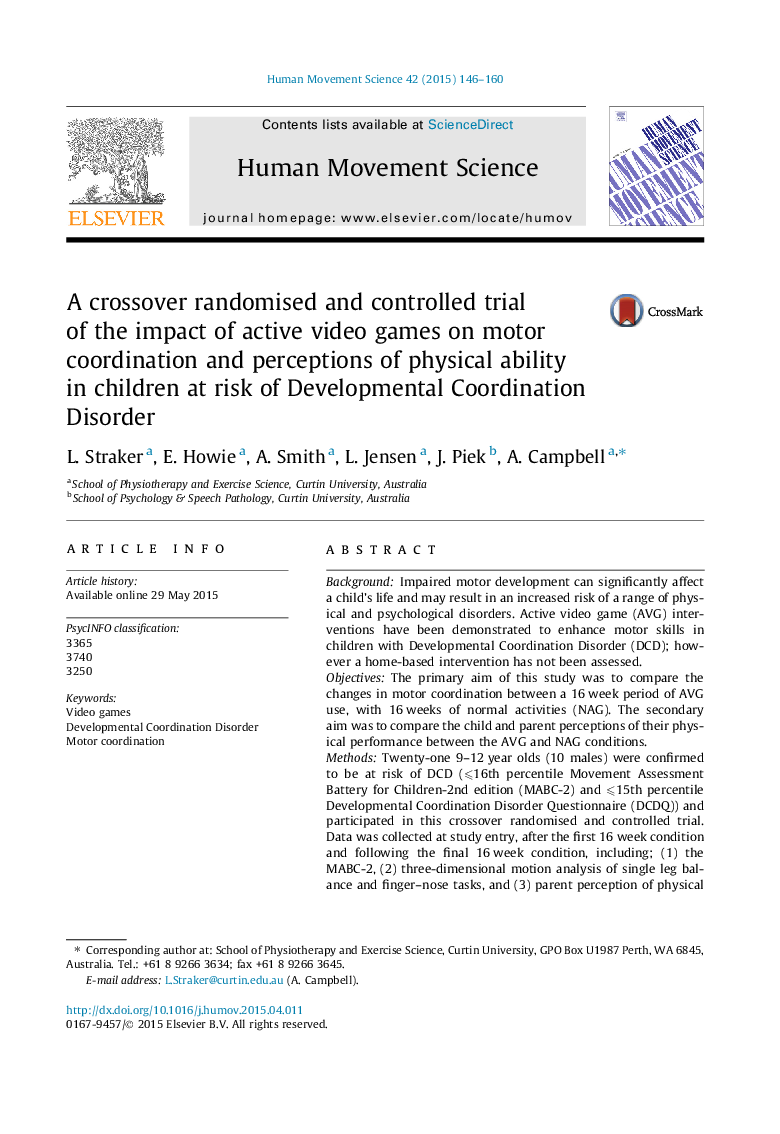| کد مقاله | کد نشریه | سال انتشار | مقاله انگلیسی | نسخه تمام متن |
|---|---|---|---|---|
| 928237 | 1474223 | 2015 | 15 صفحه PDF | دانلود رایگان |
• AVG intervention did not enhance motor skills in children with DCD.
• Participants’ perception of their physical abilities was greater following AVG use.
• Access to AVGs is not sufficient to enhance motor skills in children with DCD.
BackgroundImpaired motor development can significantly affect a child’s life and may result in an increased risk of a range of physical and psychological disorders. Active video game (AVG) interventions have been demonstrated to enhance motor skills in children with Developmental Coordination Disorder (DCD); however a home-based intervention has not been assessed.ObjectivesThe primary aim of this study was to compare the changes in motor coordination between a 16 week period of AVG use, with 16 weeks of normal activities (NAG). The secondary aim was to compare the child and parent perceptions of their physical performance between the AVG and NAG conditions.MethodsTwenty-one 9–12 year olds (10 males) were confirmed to be at risk of DCD (⩽16th percentile Movement Assessment Battery for Children-2nd edition (MABC-2) and ⩽15th percentile Developmental Coordination Disorder Questionnaire (DCDQ)) and participated in this crossover randomised and controlled trial. Data was collected at study entry, after the first 16 week condition and following the final 16 week condition, including; (1) the MABC-2, (2) three-dimensional motion analysis of single leg balance and finger–nose tasks, and (3) parent perception of physical skills. Participant perception of physical skills was collected only after the first and second conditions.ResultsThere was no significant difference between AVG and NAG for any of the primary variables including the MABC-2, balance centre-of-mass path distance and finger–nose path distance. There was no significant intervention effect for secondary measures of motor coordination; however the children perceived their motor skills to be significantly enhanced as a result of the AVG intervention in comparison to the period of no intervention.ConclusionA 16 week home based AVG intervention did not enhance motor skills in children with DCD, although they perceived their physical skills to be significantly improved.Trial Registration: Australia and New Zealand Clinical trials Registry (ACTRN 12611000400965).
Journal: Human Movement Science - Volume 42, August 2015, Pages 146–160
